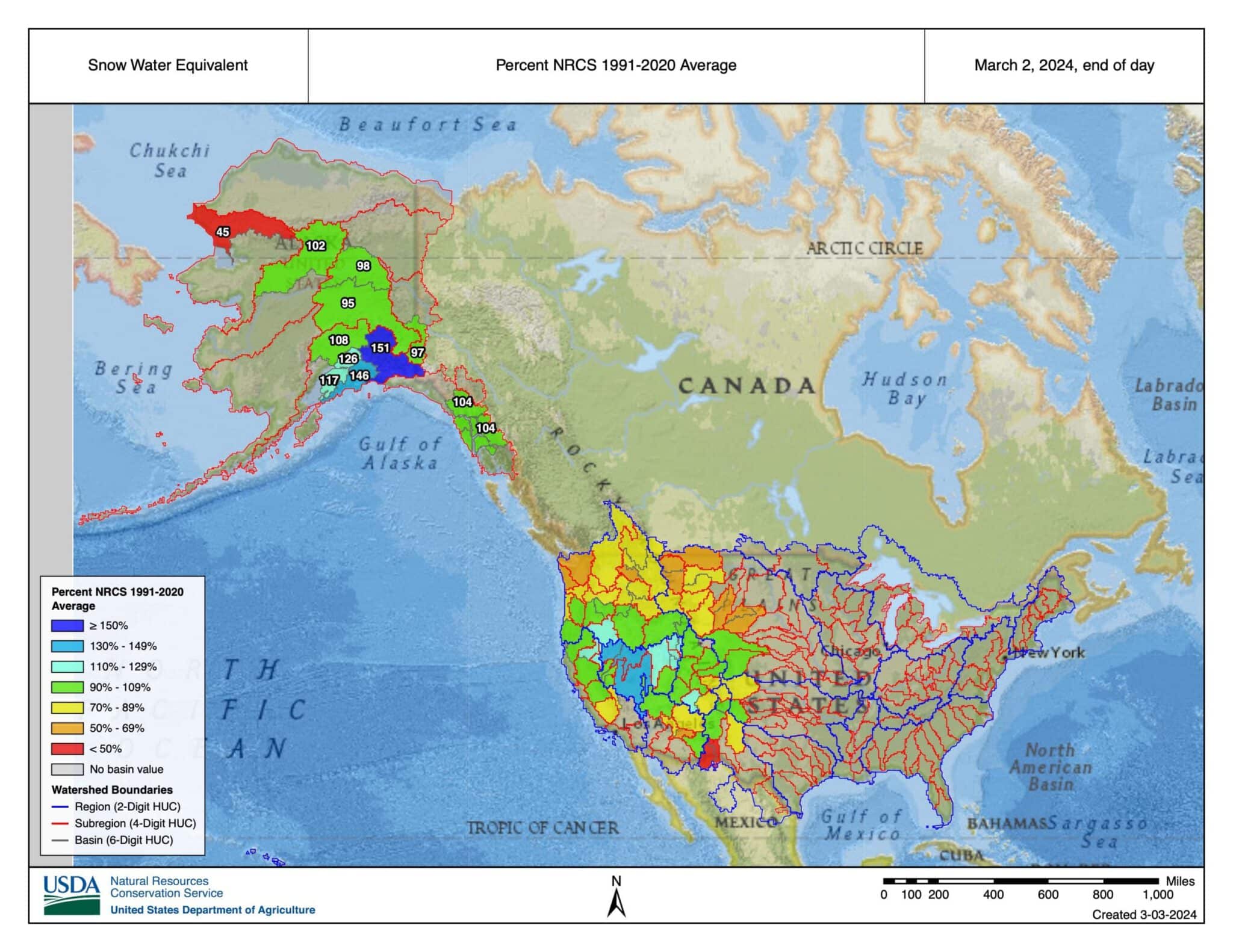From the THR Dept. of Atmospheric Rivers… A wee bit into March and the reality that our pal in Truckee gets to rev his snowblower as the latest atmospheric river moisturizes the Sierra Nevada means it’s time for a SWE update.
Hooray for SWE

SWE readings from March 2, 2024.
Help us grow. Share it.
Latest Features
-

Photo: Adam Wirth
Review: La Sportiva Stratos Hybrid
Where a fine skimo boot fits into the boot quiver.
-

Photo: Barry Wicks
Review: MTI Backcountry Preseason Training Plan
Rebounding from injury with some strength.
-

Rappelling in the Tetons. Photo: Billy Haas.
The Skinny Rope Data Crunch
The beta and data on skinny ropes for ski mountaineering.
-

The mindset shifted: Brendan O’Neill in a large mountain theater. Photo: Adam Fabrikant
Part 3: The Mindset Shift
Part three of our three-part series on big mountain mindsets: Choosing partners, building habits, and remaining diligent.
